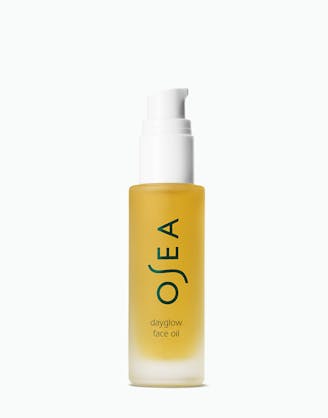Written by OSEA Staff | Updated on April 9, 2025
Characterized by tightness or discomfort in the jaw, facial muscles, and neck, facial tension is a common response to physical or emotional stress. Fortunately, you can address this common nuisance. Incorporating a massage known as the gua sha technique into your self-care routine can help relieve tension in your face muscles and promote relaxation.
What Is the Gua Sha Technique?
The practice of gua sha involves using a flat, smooth-edged tool (usually a piece of jade called a gua sha stone or sculptor) to “scrape away illness.” This remedy is one of the oldest recorded forms of traditional Chinese medicine — there’s even evidence of its use going back to the Paleolithic Age1.
Gua sha is based on the belief that rubbing the skin repeatedly in one direction can stimulate blood flow and aid in the body’s natural healing process. Today, it’s more commonly used to address facial tension — and we love it as a self-care step. Gua sha facial massage is believed to help release tight facial muscles, reduce puffiness under the eyes, and temporarily soften the appearance of fine lines and wrinkles2.
Why Is My Face So Tense?
Relieving facial tension starts with identifying what’s causing it. While there can be many factors, here are two of the most common:
Poor Posture
Whether you're craning your neck while texting or working at a non-ergonomic desk, poor posture can put strain on your shoulders, neck, and jaw3. This often results in soreness, tension, and discomfort. Improving posture can help ease this strain and support muscle relaxation.
Stress
Emotional stress often leads to physical tension — especially in the face4. Finding ways to unwind, like meditation or facial massage, can help you release this stress and create moments of calm throughout your day.
How to Relieve Facial Tension with Gua Sha
Incorporating gua sha into your skincare routine is a soothing and effective way to relieve facial tension. Here’s how to do it:
1. Prep Your Skin
Begin by spritzing freshly cleansed skin with your favorite hydrating mist. Follow with 2 to 3 pumps of Dayglow Face Oil® to create a smooth base. This helps the gua sha tool glide effortlessly across your skin without tugging or irritation.
2. Start at the Neck
Using the Gua Sha Sculptor, begin at the base of your neck and glide upward. Use the notched edge to move gently along your jawline and chin in outward strokes. Follow your body’s natural lymphatic flow — which doesn't have its own pump like your circulatory system5 — to reduce puffiness and promote circulation.
3. Move to the Cheeks and Forehead
Rotate the gua sha so the curved edge hugs your cheekbones and forehead. Sweep the tool outward toward your hairline, again following the direction of your lymphatic system.
4. Release Facial Tension
Finish by using the corners of the sculptor to press gently into pressure points like the temples, jaw, and cheekbones. Apply light, even pressure to release built-up tension and relax the facial muscles.
Give the Gua Sha Technique a Try
Facial tension is more common than you think, but it doesn’t have to stick around. Adding gua sha to your routine can help relax your facial muscles, encourage your body’s natural drainage process, and leave you feeling refreshed. Use our Gua Sha Sculptor on its own or pair it with Dayglow Face Oil® for a luxurious self-care experience.
Sources
¹ Yin, Y. (April 25, 2013). Gua Sha. China Culture. Retrieved January 10, 2025, from http://en.chinaculture.org/info/2013-04/25/content_456628.htm
² Quinn, D. (January 22, 2021). How to Use Gua Sha for Tension, Puffiness, and Lymphatic Drainage. Healthline. Retrieved January 10, 2025, from https://www.healthline.com/health/beauty-skin-care/gua-sha-benefits
³ (November 29, 2021). Poor Posture: The Main Culprit Behind Muscle Tension. In Touch NYC Physical Therapy. Retrieved January 10, 2025, from https://www.itnycpt.com/blog/poor-posture-main-culprit-behind-muscle-tension/
⁴ Frothingham, S. (May 10, 2018). Facial Tension. Healthline. Retrieved January 10, 2025, from https://www.healthline.com/health/facial-tension
⁵ Peter, S. and Burcham, C. (October 29, 2024). Gua Sha 101: How and When to Use It for Sculpted Skin. Byrdie. Retrieved January 10, 2025, from https://www.byrdie.com/gua-sha
 Body Oil
Body Oil
 Body Moisturizers
Body Moisturizers
 Cleansers
Cleansers
 Body Scrubs
Body Scrubs
 Face Moisturizers
Face Moisturizers
 Travel & Sets
Travel & Sets


